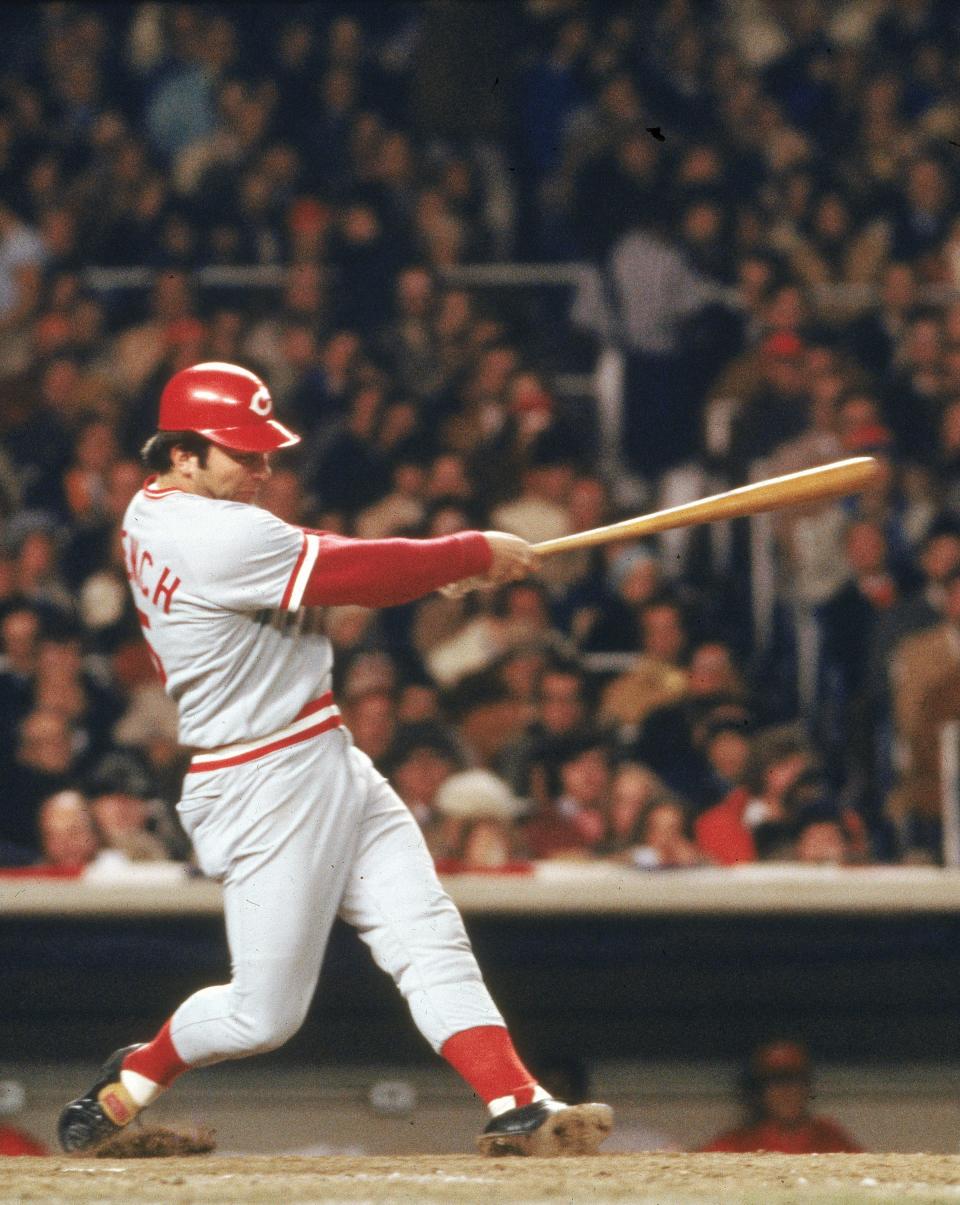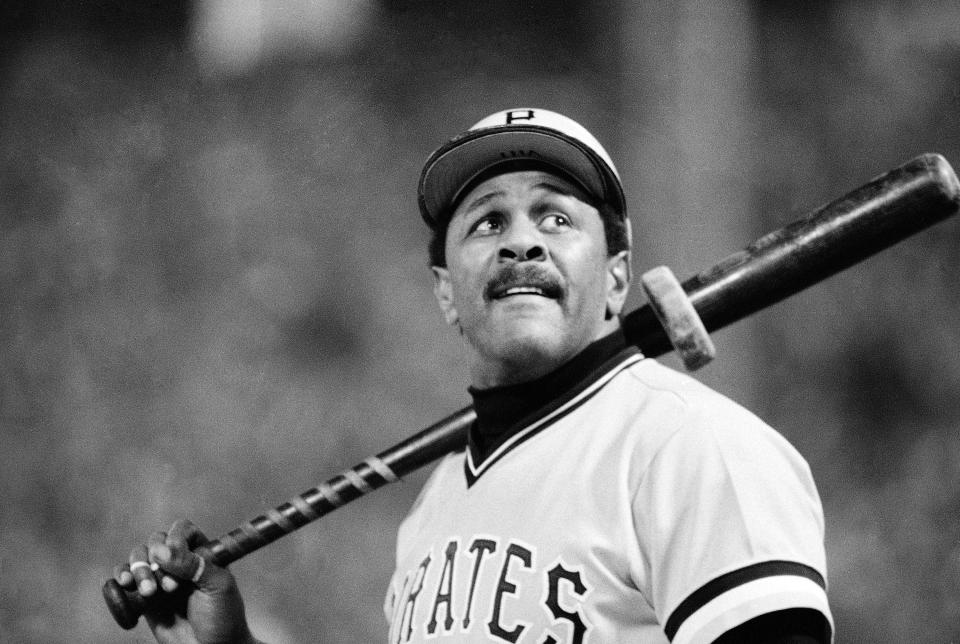TUPATALK: Oklahoma has been spawning site for several baseball immortals
- Oops!Something went wrong.Please try again later.
- Oops!Something went wrong.Please try again later.
- Oops!Something went wrong.Please try again later.
- Oops!Something went wrong.Please try again later.
- Oops!Something went wrong.Please try again later.
Although Oklahoma enjoys a golden reputation nationally as a mecca of college football preeminence, its status as a hotbed of sizzling baseball tradition shouldn’t be ignored.
Six Sooner State natives own a berth in the National Baseball Hall of Fame (Cooperstown, N.Y.). This transcendent list includes Johnny Bench, Mickey Mantle, “Bullet” Joe Rogan, Willie Stargell, Lloyd Waner and Paul Waner.
Each of them made a colorful impact on the game during their playing days.
More TupaTalk: Time writes its own storyline
Many considered Bench the overall best MLB catcher from the late 1960s throughout the 1970s.

He helped anchor a collection of superstars for the Cincinnati Reds, known as the Big Red Machine.
The 14-time All-Star won the National League MVP twice (1970, 1972), the World Series MVP once (1976) spearheaded Cincinnati’s drive to back-to-back World Series titles (1975, 1976).
His numbers were far above the average for a catcher — 2,048 hits, 389 homers and 1,376 RBIs.
He helped modify the image of a catcher as not only a tough guy, but an exceptional athlete.
Stargell labored his entire career for the Pittsburgh Pirates, helping them win seven-game World Series crowns in 1971 and 1979.

An imposing presence at the plate at 6-foot-2 and a big, muscular frame, Stargell could make a ball look like a bb pellet when he connected squarely.
I recall Stargell’s check-swing style at the plate, spinning the bat so that it almost resembled a windmill.
His gregarious and friendly personality and the confidence he engendered in teammates earned the nickname “Pops.”
He also owns a unique triple — in 1979 he won the NL MVP, the NL Championship Series MVP and the World Series MVP awards, the only player to date to have done so.
Stargell finished with 475 homers, 2,232 hits and 1,540 RBIs.
Rogan made his mark the Kansas City Monarchs in the Negro baseball leagues.
Born in Oklahoma City, Indian Territory, Rogan starred as both the ace starting pitcher and the cleanup slugger.
Some contemporaries, both white and black, have referred to Rogan as perhaps the best pitcher that ever lived and certainly one to rival Satchel Paige.
His career numbers are eye-popping for the era of the 1920s and 1930s — a 120-52 pitching record, a 2.65 career earned run average, a .338 career batting average and 105 stolen bases.
Mantle's credentials as probably one of the best 20 ballplayers in history are unimpeachable.
Although his career numbers don’t pop out to today’s audiences, at the time they were monstrous stats — 536 career homers, 2,415 hits, 1,509 RBIs and a career .298 batting average.
He made the All-Star roster 20 times and played on seven World Series championship teams with the New York Yankees.
Mantle’s achievements have to take into account he struggled with debilitating leg injuries starting with high school and extending throughout his life.
He also played with an apparent damaged ACL for most his career.
Mantle’s destiny made a brief stop in Bartlesville when he played in the late 1940s for Independence (Kan.) in the Kansas-Oklahoma-Missouri (KOM) Class D League, in which Bartlesville also had a team.
There’s a tale, that seems to be true, the first homer Mantle ever hit in a concrete-based stadium was in Bartlesville.
More: Bartlesville's Doenges Stadium/Rigdon Field gets fresh colors
Mantle earned a reputation in the bigs as an easygoing, friendly, humble and approachable guy.
But, his challenges with alcohol have been well-documented, perhaps preventing him from reaching the pinnacle of his seemingly limitless potential as a player.
However, he created a positive public image with his charisma and personality and became one of baseball’s most popular players of all time.
The Waner brothers (Lloyd and Paul), known as “Little Poison” and “Big Poison”, respectively, played from mid-1920s to 1940 for the Pittsburgh Pirates.
Paul exceeded 3,000 hits (3,152), more than the career total of Babe Ruth, Lou Gehrig, Rogers Hornsby and Ted Williams.
Lloyd amassed nearly 2,500 career hits.
They helped Pittsburgh win the 1927 NL pennant — the last time Pittsburgh would play in the Fall Classic until 1960.
Perhaps it’s redundant to repeat that Oklahoma has made a tremendous impact on MLB history.
And, this glory-laden list doesn’t include those significant big leaguers that didn’t quite reach Hall of Fame status, at least not yet.
This article originally appeared on Bartlesville Examiner-Enterprise: Mike Tupa: Oklahoma a spawning site for several baseball immortals

